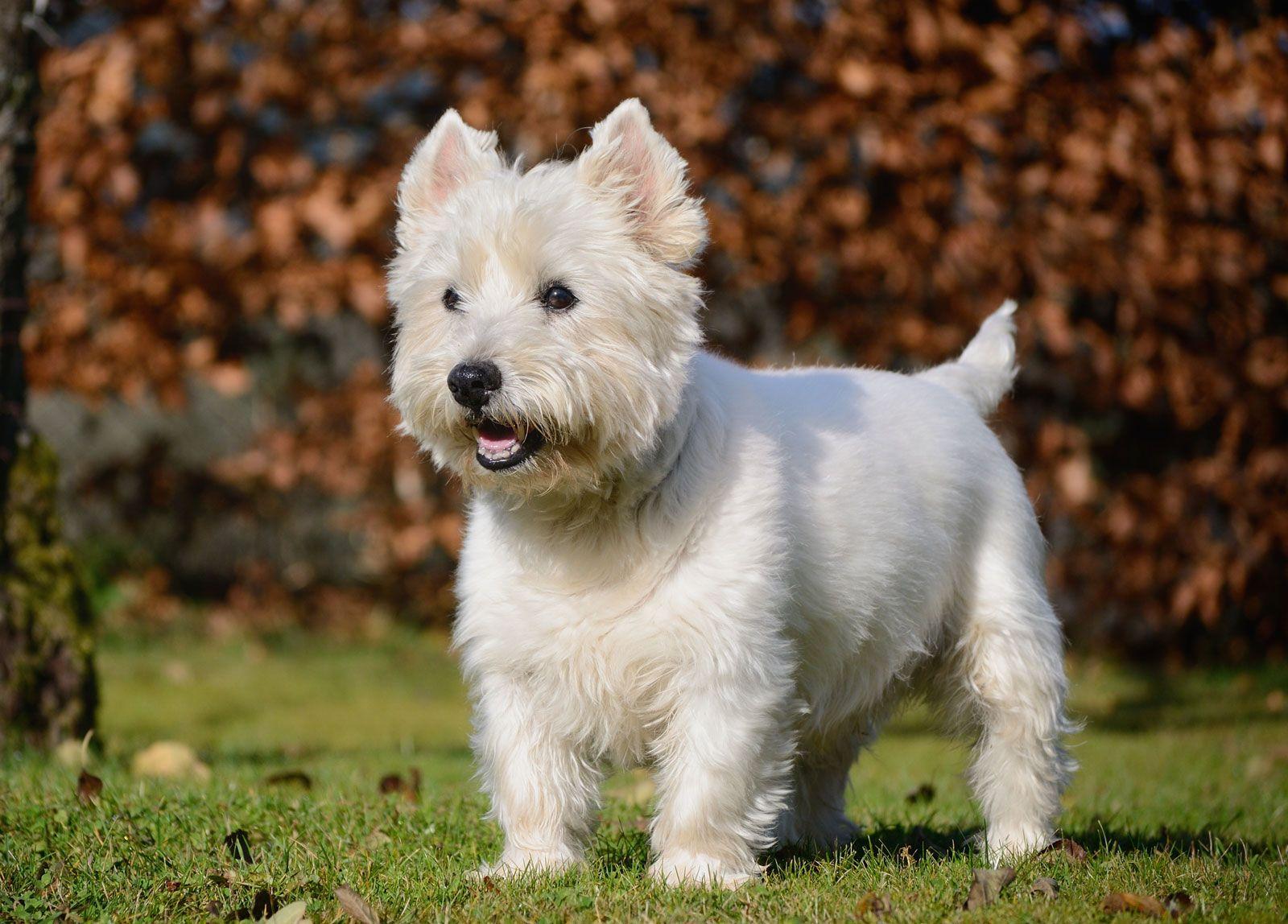When it comes to charming canine companions, the West Highland White Terrier, affectionately known as the Westie, and the Scottish Terrier, or Scottie, stand out as two beloved breeds with rich histories and distinct personalities. While both breeds hail from Scotland and share a terrier heritage, they each possess unique characteristics that appeal to different types of dog lovers.
In this article, we’ll take a closer look at the differences between Westies and Scotties, examining their physical traits, temperaments, grooming needs, and suitability as family pets. Whether you’re considering adding one of these delightful dogs to your home or simply want to learn more about them, our side-by-side comparison will help you appreciate the qualities that make each breed special. Join us as we explore the delightful world of Westies and Scotties!
Table of Contents
- Understanding the Origins and History of Westies and Scotties
- Exploring the Distinct Physical Traits of West Highland Terriers and Scottish Terriers
- Temperament and Personality: What Makes Westies and Scotties Unique
- Care and Maintenance Tips for Happy and Healthy Westie and Scottie Companions
- Q&A
- Wrapping Up
Understanding the Origins and History of Westies and Scotties
The fascinating lineage of both West Highland White Terriers and Scottish Terriers can be traced back to the rugged landscapes of Scotland. Bred primarily for their hunting abilities, these breeds were developed to tackle vermin on farms and in the highlands. The Westie, known for its predominantly white coat, was cultivated during the 19th century, with its ancestors believed to be derived from various terrier breeds, including the now-extinct Clydesdale Terrier. In contrast, the Scottie boasts a more distinct appearance with its wiry black coat and is often associated with the Scottish nobility, having originated from the Scottish Highlands around the same period.
Both breeds have unique histories that reflect the culture and lifestyles of their Scottish roots. The West Highland White Terrier was specifically bred to be a hunting companion, known for its spirited personality and energetic nature. Meanwhile, the Scottish Terrier was often a loyal companion to farmers and was associated with a more stoic demeanor. Here are some key distinctions:
- Westie: Friendly and outgoing.
- Scottie: Independent and reserved.
- Westie: Known for its playful behavior.
- Scottie: Exhibits a more serious temperament.
Understanding their historical backgrounds helps illustrate not only their physical features but also their behavioral traits. Both breeds remain popular, reflecting a deep connection to their origins and the enduring charm they bring to families around the world.
Exploring the Distinct Physical Traits of West Highland Terriers and Scottish Terriers
When it comes to physical traits, West Highland Terriers and Scottish Terriers showcase their individuality through distinct characteristics. Westies, with their charmingly white, fluffy coats, typically sport a more rounded appearance. Their expressive eyes and small, erect ears lend them an air of friendly alertness. They’re known for their compact size, averaging around 10 to 11 inches in height and weighing between 15 to 20 pounds. Their playful demeanor is further accentuated by a wagging tail that seems to highlight their spirited nature. In contrast, Scotties possess a more robust build with a distinctive wiry coat that can be of varying colors, including black, brindle, and wheaten. Their longer snouts and bushy eyebrows heighten their dignified presence, while their sturdy legs and lower profile, typically ranging from 10 to 11 inches tall and weighing between 18 to 22 pounds, contribute to a strong, confident stance.
The grooming requirements of both breeds reflect their unique fur types. Westies require regular brushing to maintain their soft, flowing coat and prevent matting, along with occasional trimming. Their grooming routine also necessitates regular ear cleaning and nail clipping. Scotties, on the other hand, benefit from a more thorough grooming regimen due to their thicker and coarser fur. This includes regular stripping to maintain coat quality and prevent excessive shedding, alongside the same standard ear care and nail maintenance routines. Below is a comparison table to summarize these essential physical traits:
| Trait | West Highland Terrier | Scottish Terrier |
|---|---|---|
| Coat Color | White | Black, Brindle, Wheaten |
| Height | 10-11 inches | 10-11 inches |
| Weight | 15-20 pounds | 18-22 pounds |
| Temperament | Friendly and Playful | Confident and Dignified |
Temperament and Personality: What Makes Westies and Scotties Unique
When examining the temperament and personality of Westies and Scotties, it’s easy to see why both breeds have dedicated fanbases. West Highland White Terriers, often known as Westies, are known for their cheerful disposition and playful nature. They are typically friendly, outgoing, and love being the center of attention. Their high energy levels make them great companions for active families, and they thrive on interaction and engagement. On the other hand, Scottish Terriers, or Scotties, tend to be more independent and reserved. They exhibit a strong-willed personality and often form a deep bond with their owners, showcasing loyalty and protectiveness. While Scotties may not be as overtly playful as Westies, they have a robust and charming presence that endears them to many.
Despite their differences, both breeds share some common traits that make them unique:
- Affectionate Nature: Both Westies and Scotties enjoy spending time with their families, though they express their affection in different ways.
- Intelligence: Both breeds are intelligent and eager to learn, though they may show varying degrees of stubbornness, especially Scotties.
- Protective Instincts: Scotties are particularly noted for their protective nature, while Westies are more likely to greet strangers with enthusiasm.
| Characteristic | West Highland White Terrier | Scottish Terrier |
|---|---|---|
| Energy Level | High | Moderate |
| Friendliness | Outgoing | Reserved |
| Training Ease | Highly trainable | Stubborn but capable |
Care and Maintenance Tips for Happy and Healthy Westie and Scottie Companions
To ensure that your Westie and Scottie companions remain happy and healthy, it’s essential to prioritize their care and maintenance. Both breeds require regular grooming to keep their coats in top condition, but the frequency and methods may vary. For Westies, a brushing at least twice a week is recommended to prevent matting, while Scotties benefit from professional grooming every six to eight weeks. In addition to grooming, monitor their nutritional intake carefully to maintain a healthy weight. Quality dog food, tailored to their specific age and dietary needs, is crucial. Regular vet check-ups will also help catch any potential health issues early.
Exercise is another vital aspect of care for both breeds. While both Westies and Scotties are energetic, they have different exercise requirements. Here’s a quick comparison:
| Breed | Daily Exercise Needs |
|---|---|
| Westie | 30-45 minutes of active play and walks |
| Scottie | 30-60 minutes, preferably with mental stimulation |
Engaging in interactive play or obedience training can significantly enhance their well-being. Ensure that both breeds have ample opportunities to socialize with other dogs to promote good behavior and reduce anxiety. By following these care tips, you can cultivate a loving and supportive environment for your Westie and Scottie, enriching their lives and deepening your bond.
Q&A
Q1: What are Westies and Scotties?
A1: Westies, or West Highland White Terriers, are small, sturdy dogs known for their vibrant white coats and lively personalities. Scotties, or Scottish Terriers, have a distinctive appearance with their wiry black coats and a more compact build. Both breeds hail from Scotland and share a common ancestry, but they have distinct physical and personality traits.
Q2: How can I differentiate the physical characteristics of Westies and Scotties?
A2: Westies are generally smaller, weighing between 15 to 20 pounds and standing about 10 to 11 inches tall. They have a rounded head, a short neck, and a compact body covered in a soft white double coat. In contrast, Scotties are slightly heavier, weighing around 18 to 22 pounds and standing about 10 inches tall. They have a longer head, a longer neck, and a distinctive beard and eyebrows that give them a more rugged appearance.
Q3: What are the notable differences in temperament between the two breeds?
A3: Westies are known for being friendly, energetic, and outgoing. They tend to be more social and thrive on interaction with people and other pets. Scotties, on the other hand, are often described as more independent, reserved, and sometimes stubborn. They can be loyal and affectionate with their families but may take a little longer to warm up to strangers.
Q4: How do their grooming needs compare?
A4: Both Westies and Scotties require regular grooming to maintain their coats. Westies need to be brushed a few times a week to prevent matting and to keep their fur looking its best. Scotties have a wiry coat that benefits from regular brushing and occasional hand-stripping to maintain its texture. Both breeds may require professional grooming sessions to keep their styles in shape.
Q5: What kind of exercise do Westies and Scotties need?
A5: Both breeds are energetic and require regular exercise to stay healthy and happy. Westies typically enjoy daily walks, playtime, and mental stimulation. Scotties also need daily exercise but may be slightly less demanding than Westies. Both breeds thrive in homes where they can engage in active play and have space to explore.
Q6: Are there any health issues specific to each breed?
A6: Yes, both breeds can be prone to certain health issues. Westies may be susceptible to skin conditions, allergies, and certain genetic disorders like hip dysplasia. Scotties can face health challenges such as bladder cancer, certain skin conditions, and hip dysplasia as well. Regular vet check-ups and a healthy diet can help mitigate some of these risks.
Q7: Which breed is better suited for families?
A7: Both breeds can be good family pets, but it often depends on the family’s lifestyle. Westies tend to be more playful and friendly, making them an excellent choice for families with children or other pets. Scotties are loyal and protective but may require more patience in introducing them to new family members. It’s essential to consider the individual dog’s personality and the family environment.
Q8: Can Westies and Scotties live in apartments?
A8: Yes, both breeds can adapt well to apartment living, as long as they receive regular exercise and mental stimulation. Westies, being more sociable, may thrive in a bustling environment, while Scotties might prefer a quieter space. Regardless of living situation, both breeds require daily walks and playtime to keep them content.
Q9: How do I choose between a Westie and a Scottie?
A9: Choosing between a Westie and a Scottie depends on your lifestyle, preferences, and what qualities you desire in a dog. If you want a more outgoing, playful companion, a Westie might be the right fit. If you prefer a more independent, dignified dog, a Scottie could be the better choice. It’s always best to meet individual dogs and consult with breeders or shelters to find the perfect match for your home.
Wrapping Up
while Westies and Scotties may both hail from Scotland and share a few charming traits, their distinct appearances, temperaments, and care needs set them apart in delightful ways. Whether you’re drawn to the lively personality of a West Highland White Terrier or the dignified presence of a Scottish Terrier, both breeds have much to offer as loyal companions. Understanding these differences can help prospective dog owners make informed decisions that align with their lifestyles and preferences. Whichever breed you choose, you’re sure to gain a devoted friend and a bundle of joy. Happy dog parenting!

















